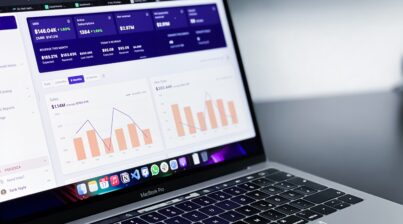Paul Martin knows when a company should begin to employ an HRIS– also known as an HR information system software designed to allow HR activities and processes to be done digitally.
“When you hire your first full-time person devoted to HR or feel you could have a single person focused on HR, that’s really when an HRIS becomes key,” said Martin, Senior Manager of Strategic Partnerships at Namely, during a recent Employee Cycle podcast with CEO Bruce Marable.
(That hire usually occurs when a company is at the 10-20 employee range, he added.)
Vendors such as Namely, which has built an all-in-one HCM platform to handle the “core operational components” of HR, payroll and benefits, offer a range of options when it comes to choosing a solution, so when shopping for an HRIS, Martin said it’s important to remember what an HRIS is not.
“An HRIS can’t be everything to everyone,” he said. “So focus on core functionality that the HR function needs to operate (HR, payroll and benefits) and then open it up to allow it to “play nicely” with other platforms.
Martin said buyers should make sure their ultimate choice is efficient in how it uses its data.
“A key component of a good HRIS is its ability to take people data and combining it with all of the other data being collected and utilized across the company while framing all the data within existing business processes,” he said. “While ‘HR’ is in that title HRIS, it’s actually a much broader, sweeping platform because of the larger implications that an HRIS has to a company’s growth and business processes.”
Making the Business Case for HRIS
So if you’re in HR in a company that fits Martin’s description, how can you sell the idea of making a big investment in an HRIS to the company leaders?
Martin said three factors should stand out in any pitch: An HRIS makes HR departments more efficient; it creates an experience in which employees feel more empowered; and it can take data and aggregate it at the executive level.
“Efficiency is the name of the game, it’s why it exists,” Martin said, “so you’ve also got to make the case [to company leadership] that it can do X,Y and Z in a more efficient fashion [than current processes allow].”
The ‘Holy Grail’ Metric
The possibilities are almost limitless when it comes to tracking data in an HRIS, Martin said. But there are at least three metrics companies should be focusing on: “The Holy Grail, particularly in HRIS, is tracking headcount growth,” he said.”It’s basic but really key to tracking the success of company.”
(Find out what the other two are at the 15-minute mark of the podcast.)
At Namely, Martin said they even measure satisfaction levels regarding the variety of snacks that are offered to employees.
“It may seem silly, but it all aggregates” to form a more complete picture of the employee experience, he said, adding that company feedback shows a desire for more healthy and fresh snacks.
“There’s only so many Kind bars that you can eat,” he said.
Getting Employees On Board
To ensure a high usage rate among employees, make sure your HRIS looks more like Facebook or LinkedIn and not like an ‘90s MS-DOS document, Martin said, adding that a simple, enjoyable user experience that invites usage has two benefits: It gives the employees a heightened sense of engagement with the company, and it gives HR more data to collect and analyze.
“One of the more exciting things that has happened in the past few years in the HR tech space,” he said, “is the idea of empowering employees to go into [an HRIS] and engage with it. And that’s the key, because any system is only as good as its utilization rate.”
Martin said the benefits of a modern and well-designed HRIS is fundamental to assuring that HR’s voice is heard–and heeded–in the C-suite.
“If you’re not using a modern system,” he said, “then it really becomes difficult to move [HR] out of what’s been perceived as a back-office function. People are your company’s most important asset and HR has already made that shift from the back office to a seat at the table, so having an HRIS system to back up all those key insights is so, so key.”












